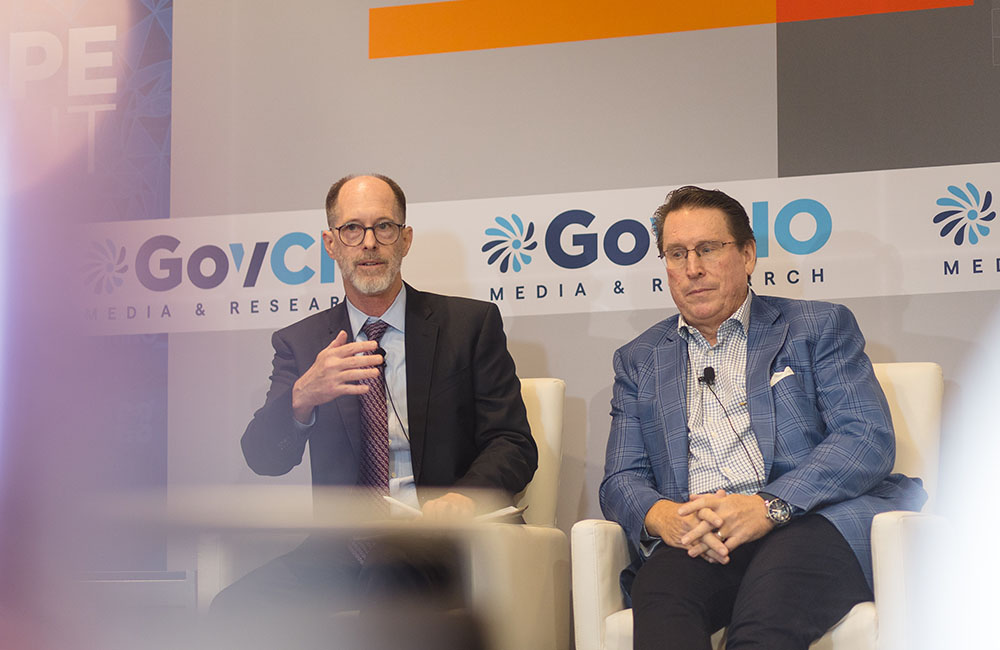Good Data, Trust Critical to AI in Public Health
New approaches to data and emerging technology have benefits in public health, but leaders must build trust in communities first.

Generative artificial intelligence and machine learning show promise transforming health care by driving better patient outcomes and more effective population analysis and reducing labor burden on physicians, a panel of public health experts and practitioners said Wednesday.
For these technologies to deliver on their promise, they said, it’s critical to ensure that the data they’re based on be reliable and representative. It’s also necessary to build trust across communities.
“Being able to develop effective data strategies is going to be key,” said Monica Coley, a senior business development manager for state and local government within Amazon Web Services’ Health and Human Services portfolio, told an audience at the AWS Summit in Washington, D.C. “As we know, the more data you have, the more representative it is to the population at large.”
To be sure, AI is already transforming public health. Department of Health and Human Services Chief Medical Officer Dr. Leith States cited the agency’s LymeX Innovation Accelerator effort launched in 2018. The program initially aimed to develop novel diagnostics for the field of tick-borne disease, which had stagnated, and now includes AI analysis to help develop new diagnostics.
That effort, which required the department to acknowledge past distrust and divides among stakeholders over addressing the disease, also illustrates how a collaborative and transparent approach with new data analysis tools could set conditions for success, States said. Now HHS is working with the Food and Drug Administration to develop a novel regulatory pathway for Lyme diagnostics — an outcome reached through involving the community and considering its needs.
“The only way you get to meaningful outcomes is through meaningful engagement at the leading edge,” States said.
Dawn Heisey-Grove, senior federal public health account manager at AWS, said she’s found that in some parts of the federal government, the challenge is simply to make data accessible — moving it from the “locked filing cabinets” where medical files are sometimes still kept to a digital format where it is accessible to computer analysis.
On the other side of the spectrum, such as with HHS’ recently established Advanced Research Projects Agency for Health (ARPA-H), the conversation is about transforming the way that data is used. For example, she said, AI and machine learning tools can take on the tedious and time-consuming work of compiling medical research into different required formats, enabling a scholar to easily share information with a whole community of colleagues, compiled differently for each based on their needs.
For AI-enabled public health care, there is a new set of criteria coming to the fore, said Patricia McTaggart, a program director and teaching instructor at George Washington University’s Milken School of Health. To the traditional “right care, right time, right place” mantra common in health care delivery, she said she teaches her students to add “right modality and right algorithm” to the list. In other words, they must consider information in the right context — the pre-COVID-19 world was a very different context, for example, than the world we live in now — and with the right set of parameters to yield reliable results.
Multiple public health experts on the panel sounded a note of caution, saying it could be a mistake to assume the data they used was impartial or incorporated all experiences. McTaggart noted that when she worked in local public health, available data didn’t include tribal health records from local native American communities. Even when feeding published clinical research into an algorithm, researchers must be cognizant of what might not be represented: Heisey-Grove pointed out that the field of research was a product of predominantly white and male authorship.
This illustrates, Coley said, why it’s critical to involve an organization’s equity leaders in developing data analysis tools and systems.
“If you are building models and during your machine-learning life cycle, if the people at the table — the engineers and data scientists, the health equity individuals are not at the table … you’re going to lose a lens on that data that may find some of these biases,” Coley said.
States said the emergence of AI has helped to accelerate information exchanges and pathways between health organizations. As stakeholders seek to best employ it, he said he expects it to create new pathways for communication and collaboration.
“AI, I think, is going to help force that issue,” he said. “Getting the community together to have those tension-filled moments around what do we mean here and how could we operate better.”
This is a carousel with manually rotating slides. Use Next and Previous buttons to navigate or jump to a slide with the slide dots
-

AWS Summit: Pacific Northwest National Lab Leaders Look to Cloud, AI to Enhance Research
Cloud computing and data-sharing capabilities are critical for the nation's researchers working on the most pressing challenges.
7m watch -

Agencies Highlight Successes in Cloud Modernization
Leaders from DOD, FAA, and Energy say cloud infrastructure is enabling advanced data analytics and software development.
3m read -

Automation and AI Could Ease CORA Assessments
Officials say that emerging technology advancements will help simplify the DOD's new cyber resiliency assessment.
4m read -

TechNet Cyber: Pentagon’s Fulcrum Strategy Strengthens Zero Trust
Agency official George Lamb said being ‘risk tolerant’ is critical for cybersecurity and identity management.
15m watch




